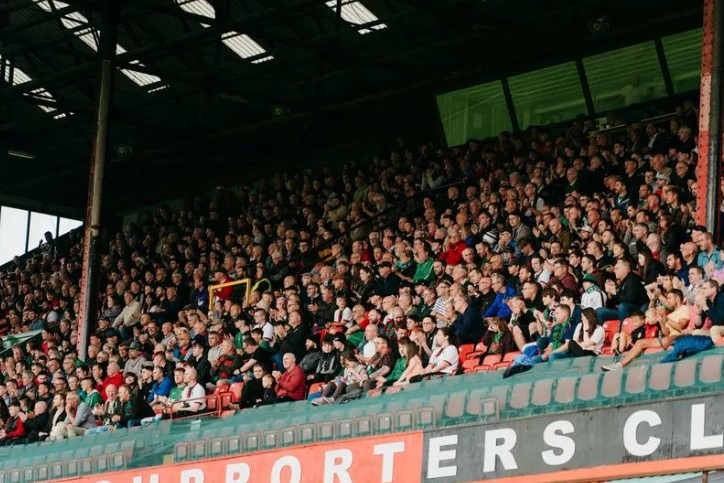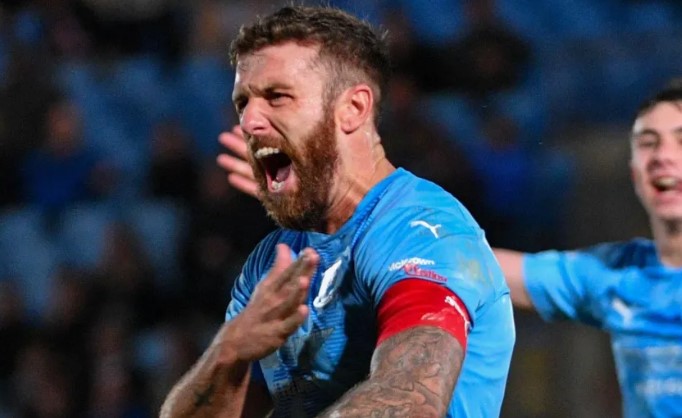Let’s get a basic fact of life out of the way first – no one likes a price hike.
No one likes a price hike in the same way that no one likes paying taxes, bills, debts, insurance and other such necessary expenses which, in themselves, are rising amid a general rise in the cost of living over the past couple of years.
Naturally, then, when news broke that Sports Direct Premiership admission prices are to rise by a couple of quid from next season, there was a mixture of disappointment and frustration among supporters.
That rise was probably to be expected. After all, operating costs are increasing and player wages are also going up; clubs have to find ways to keep the lights on and run a sustainable operation, with a salary cap also to come into effect in the wake of increased pay across the Irish League and full-time set-ups now in place.
These are tough decisions for clubs but, in the current climate, necessary if it’s for the sake of preserving their future interests.
Some were quick to lay the blame at NI Football League CEO Gerard Lawlor’s feet but, given the 12 Premiership clubs unanimously deemed this a necessary step, it seems unfair that the former Cliftonville chairman should foot the backlash on that side of things.
Larne owner Kenny Bruce, who revealed he was in favour of the change, outlined his reasoning on ‘X’ and pointed to the value for money of season tickets as a factor that could compensate for the rise.
“Any decision to increase ticket prices is a tough one for clubs to make, we all want more supporters and to make our games as affordable as possible whilst improving the match day experience and facilities,” the Purple Bricks founder wrote.
“The season ticket is the best and most affordable way to watch matches and support your club, our season tickets at Larne are less than £9 per game with many ways to pay.
“Our game is one of the most affordable leagues in Europe to watch but I do appreciate supporters will feel a 15% increase is too heavy.
“We will do all we can to make sure our supporters can get their hands on the most affordable tickets which are season tickets whilst investing most of the increase our in standard match day tickets into our match day experience and facilities.”
And, yes, £15 is no small sum given it was £12 in just two seasons ago and £10 a few seasons before that but, as detailed, football is far from alone in having to adapt to the ways of the world.
Everything’s going up. You could’ve bought a loaf of bread in your local corner shop for a pound two years ago; that cost could easily have doubled now.
Accounting that it could cost a home-and-away Irish League diehard the guts of £60 – not including travel and food – in a month to follow their team every Saturday, the supporters have the right to voice their dismay even if the rise reflects growth in the quality on the pitch and, at long last, steps in the right direction as to the release of Government money to improve facilities.
Nevertheless, season tickets offer more value for money for home clashes, sure, but on the road… well, those fans who hardly miss a kick are the ones who will, at the end of the day, invariably be hit the hardest by this.
Which leads nicely onto the next point, and an area where NIFL can make big improvements.
Concession prices have also risen, up to £10, which is an increase of a quid from last term and two pounds from the season before last.
That price bracket includes children under the age of 16, and a lack of all-important official provision for young fans to make the game more affordable to them is a sticking point that has not really been addressed.
Let’s put that into context. Say a family of two adults and two kids under the age of 16 who aren’t season ticket holders travel to watch their team play four times over the course of a month… the overall price of admission in the month, not including food and travel, would be £200. Add that up over a season and the total cost could easily be north of £2,000 should that family go home and away for every single game in a season.
Wild, isn’t it? Granted, there are a number of clubs who run ‘kid for a quid’ initiatives or who will not charge children if there is a paying adult, but that is at the discretion of each team.
Lawlor’s decision to spread the matchday agenda from Friday to Sunday has proved a smart move and coincided with an increase in attendances over the past couple of years.
The small size of Northern Ireland also facilitates this; it could be a League Cup tie between Larne and Dergview and a four-hour-round trip on a Tuesday night and you’d still get a good smattering of away fans who make the effort to travel.
But if you want to promote the ‘family day out’ idea behind it all, you need to actually make it feasible for families to support it.
Introduce a cap for fans under the age of 16 at, say, £2 and see what the impact is. I’d go as far to say that it’d be a game-changer, and to ask young followers to fork out £10 as will be the case from 2024/25 just doesn’t seem right.
The pricing in other areas of the Irish League is phenomenal. The Championship and Premier Intermediate were both £8 for adults last year, while Women’s Premiership admission prices are just £4 throughout the summer months. Small wonder all three leagues have experienced hardly insignificant rises in attendance; the Championship by a staggering 112 per cent in 2023/24.
A new discord, however, has emerged in the men’s Premiership and, even if clubs deem it a necessary rise, that’s not to say NIFL are powerless to act in terms of attracting new fans.
Encouraging the younger generations, the future and the lifeblood of the league, is the way to go.
Featured image from NI Football League.










Leave a comment